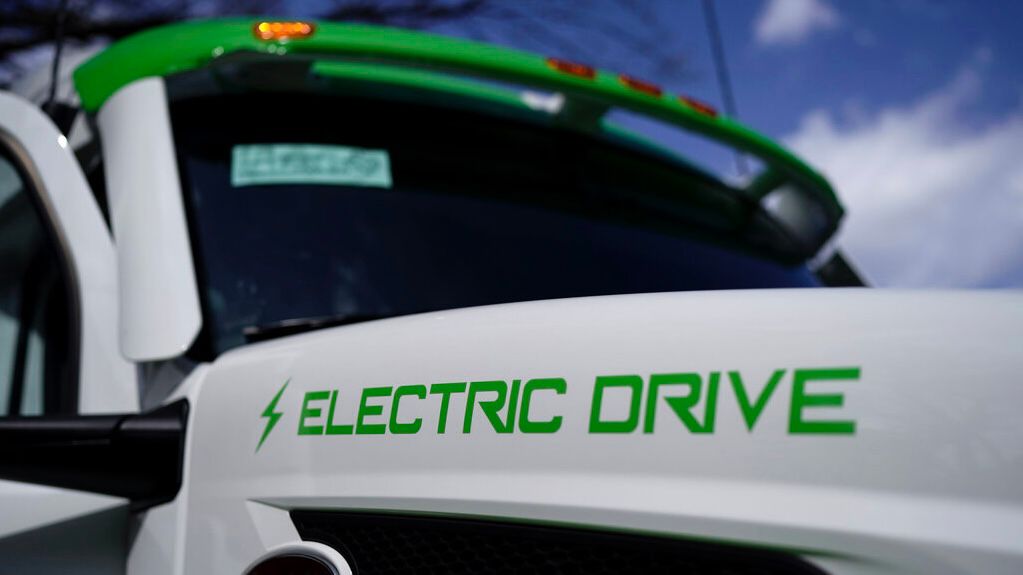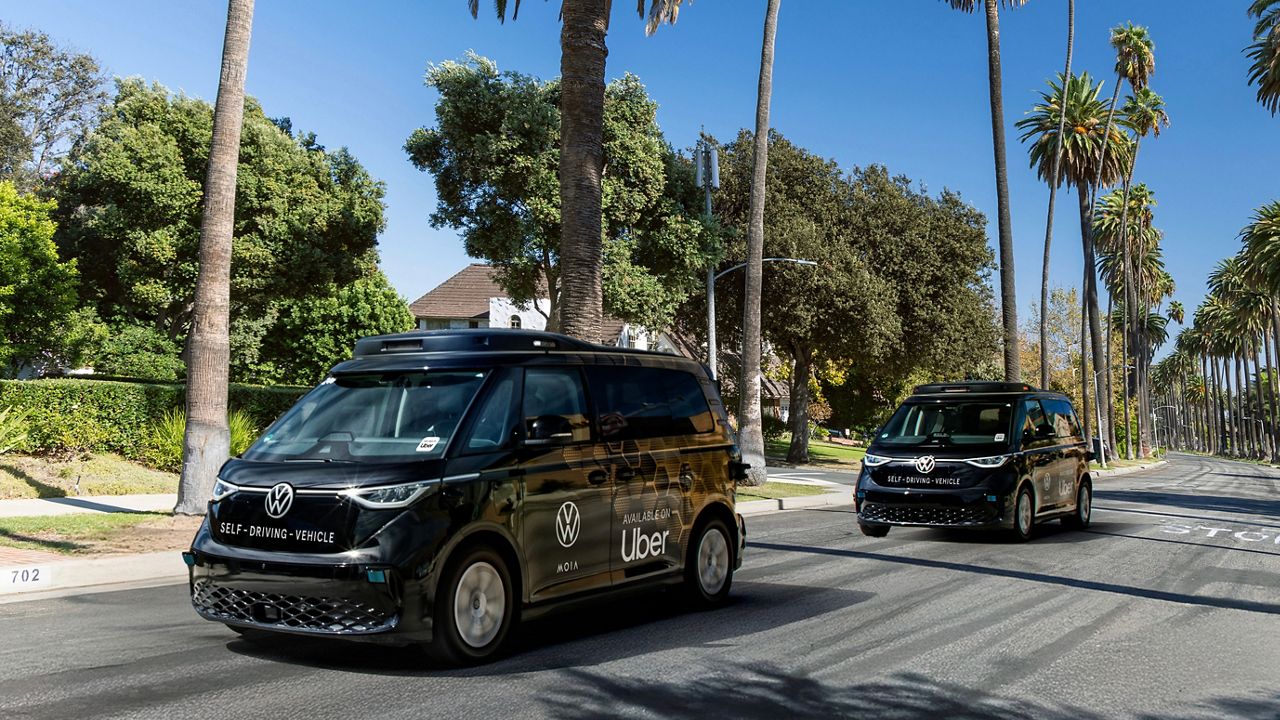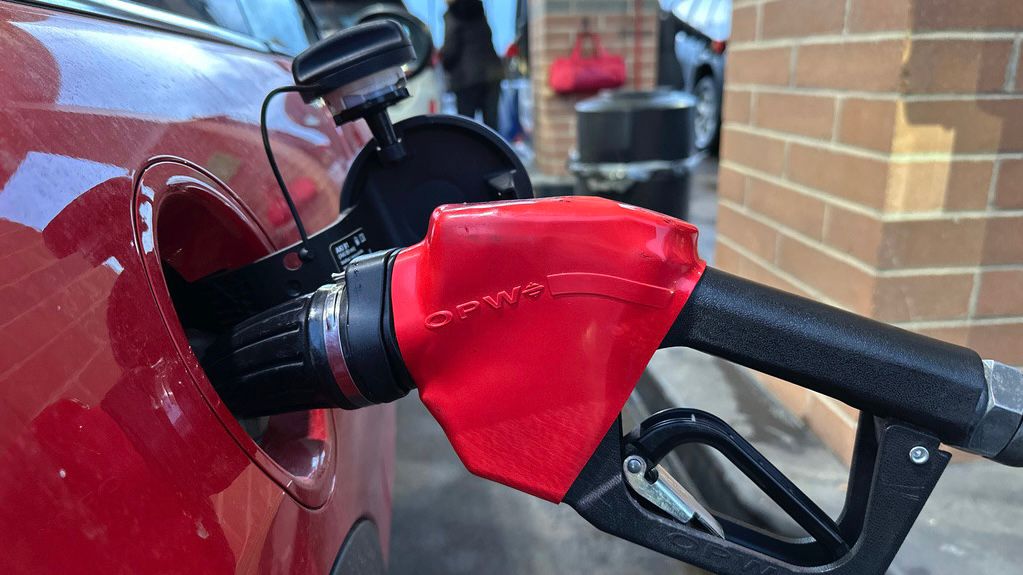Dozens of types of trucks will need to be zero emissions in less than a decade under sweeping new rules the Environmental Protection Agency finalized on Friday.
Applicable to big rigs, buses, cement mixers, trash trucks and other heavy- and medium-duty vehicles, the standards are designed to dramatically reduce greenhouse gas pollution and will take effect for the 2027 model year.
“In finalizing these emissions standards for heavy-duty vehicles like trucks and buses, EPA is significantly cutting pollution from the hardest-working vehicles on the road,” EPA Administrator Michael S. Regan said in a statement. “EPA’s strong and durable vehicle standards respond to the urgency of the climate crisis by making deep cuts in emissions from the transportation sector.”
Transportation is the largest single source of greenhouse gas emissions nationally. Trucks and other heavy-duty vehicles make up 10% of on-road vehicles but contribute 25% of emissions from the transportation sector, according to the EPA. By 2032, 25% of new big rigs and 40% of medium-duty vehicles such as box trucks could be zero emisions under the new rule.
Each year, the new Greenhouse Gas Emissions Standards for Heavy-Duty Vehicles-Phase 3 are expected to avoid 1 billion tons of greenhouse gas emissions and provide $13 billion in public health, climate and cost savings, the EPA said.
Electrifying the entire commercial truck fleet in the U.S. will require almost $1 trillion in infrastructure investment alone, according to the Clean Freight Coalition. That does not include the cost of zero-emission trucks, which can be as much as three times more expensive than their diesel-powered equivalents.
“Electrification means focusing on the vehicle segments that are easier first,” the CFC said in a statement on its website. “It means that we have to look at how fleets operate and potentially adjust. It means that we need better cooperation and planning across industries and governments. And it requires an openness to alternative technology paths to decarbonizing the heavy-duty segment.”
The association noted that the industry has a profit margin of roughly 5% and will not be able to support the transition “without financial support or a significant increase in freight rates.”
Several states, including California, offer incentives for truck operators to transition to heavy-duty zero emissions vehicles. As part of the federal Inflation Reduction Act, the EPA will distribute $1 billion to fund clean heavy-duty vehicles through 2031.
The EPA said the new rules are “technology neutral” and do not dictate what types of technology need to be adopted. Manufacturers are able “to choose what set of emissions control technologies is best suited for them and the needs of their customers.”
Currently available technologies include advanced internal combustion engines, hybrids, plug-in hybrids, electrics, battery electrics and hydrogen fuel cells.
The new standards apply to heavy-duty work vehicles, including delivery trucks, trash haulers, public utility trucks and buses used for transit, shuttles and school, as well as tractor-trailers, or big rigs. Just 2% of such vehicles are currently zero-emissions.
The American Bus Association reacted to Friday's rule by saying it is committed to a cleaner environment and supports approprpiate climate initiatives that gradually move the United States in that direction.
"However, the ABA expresses grave concerns regarding the Environmental Protection Agency's recent rule mandating a rapid shift to electric vehicles," ABA President Peter J. Pantuso said in a statement. "This forced march towards electric vehicles will result in a sgnificant increase in equipment costs, potentially doubling them. Moreover, the current lack of infrastructure and limited electric capacity make this transition impractical and financially burdensome for the industry and consumers."
Other groups hailed the new rule.
“By outlining a reduction in tailpipe emissions through 2032, today’s ruling is an important step towards ending our nation’s dependence on oil for transportation,” Electrification Coalition Executive Director Ben Prochazka said in a statement Friday, responding to the new rule. The group led a campaign encouraging the White House to adopt strict new emissions standards for heavy trucks that was supported by more than 80 businesses and 75 U.S. mayors.
“Despite strong light-duty EV sales growth in recent years, progress in the heavy-duty space has been slow, so this announcement is much-needed certainty for the heavy-duty market and supports the charging infrastructure necessary to power the electric trucks of tomorrow.”
The Electrification Coalition said the transition to zero-emissions trucks will bolster national security by reducing the country’s dependence on global oil markets and protect public health.









